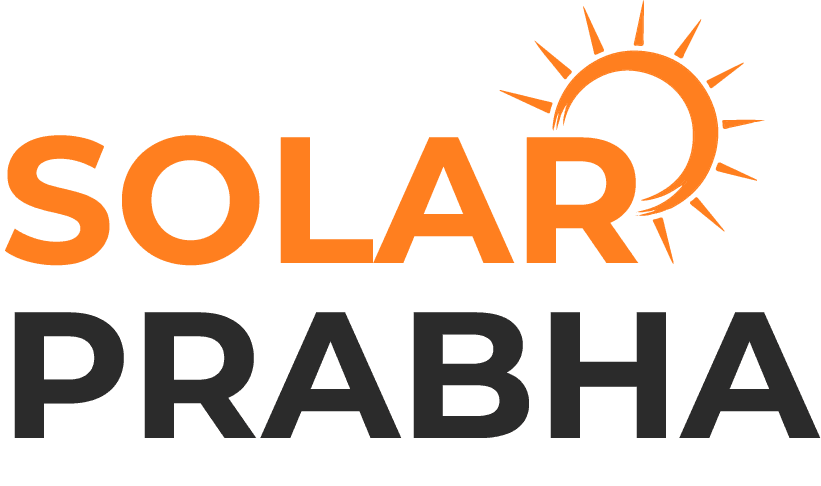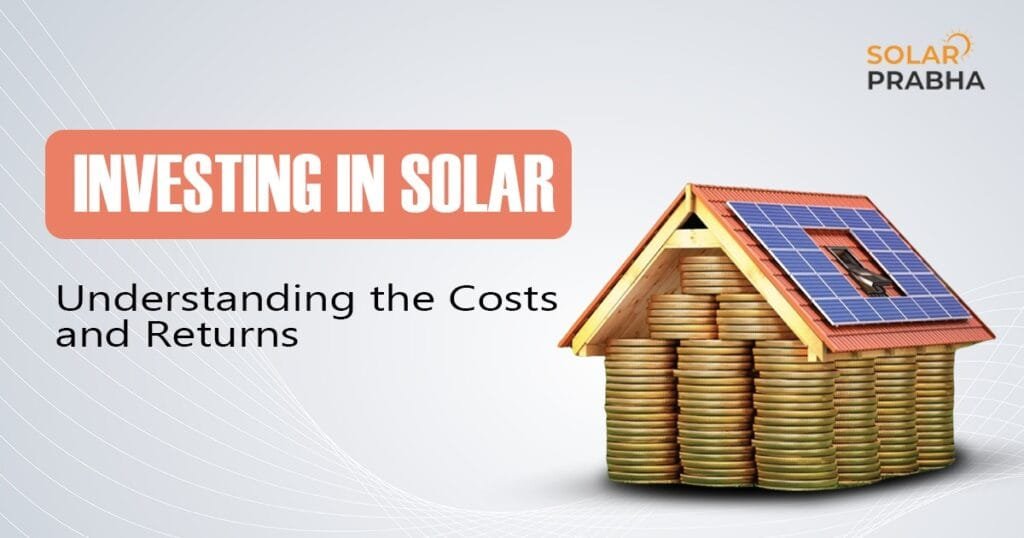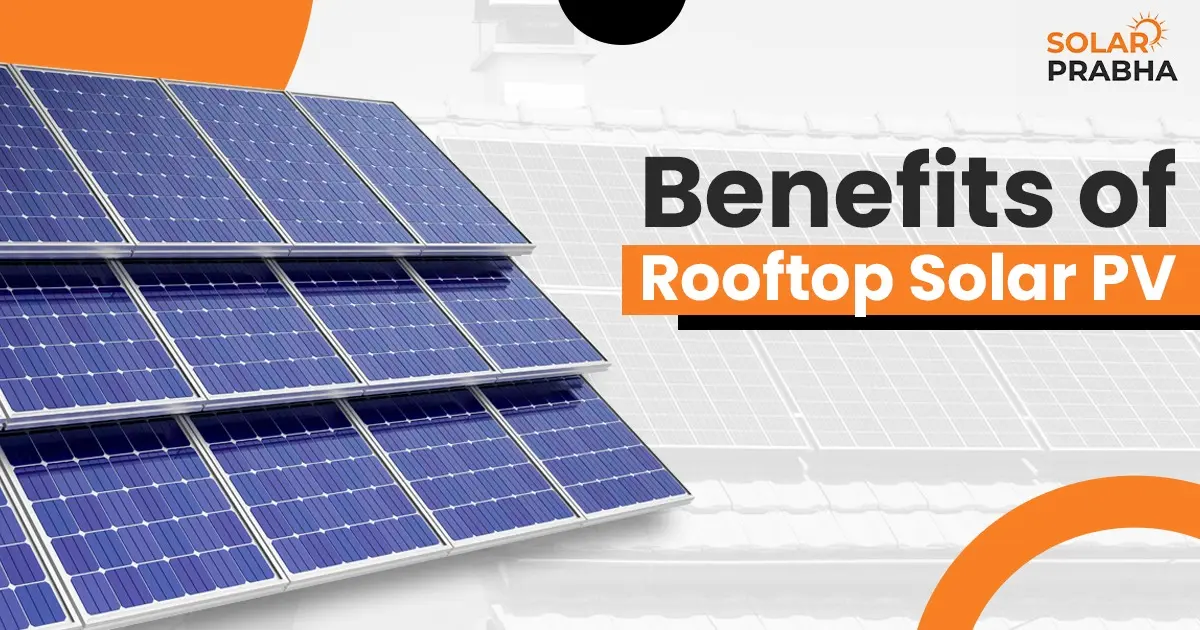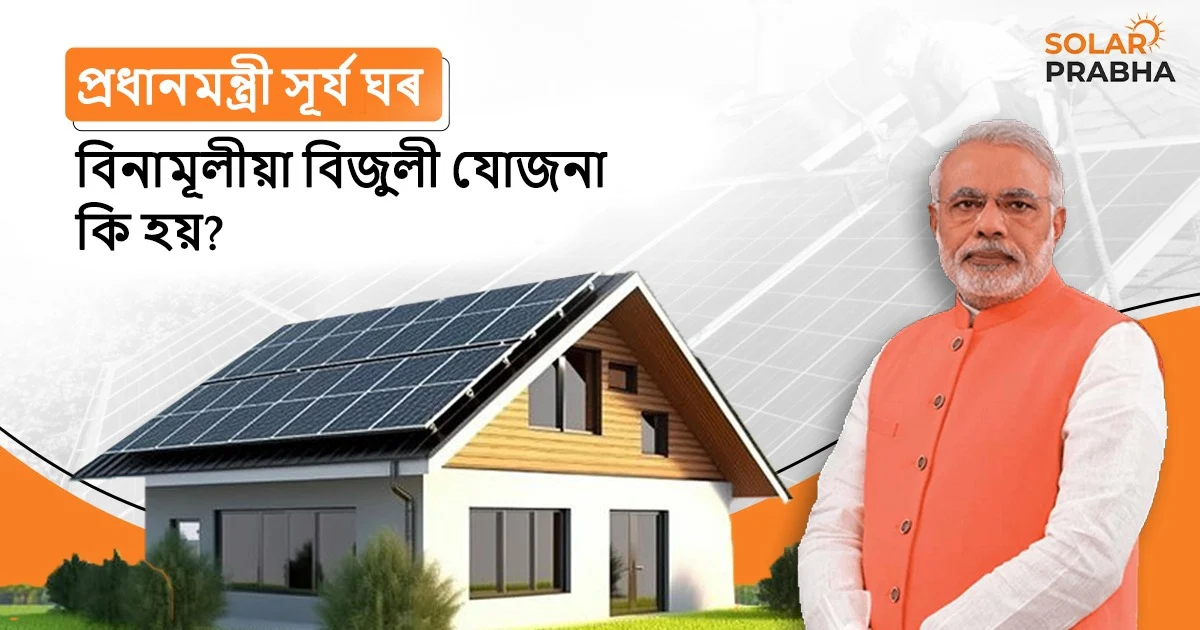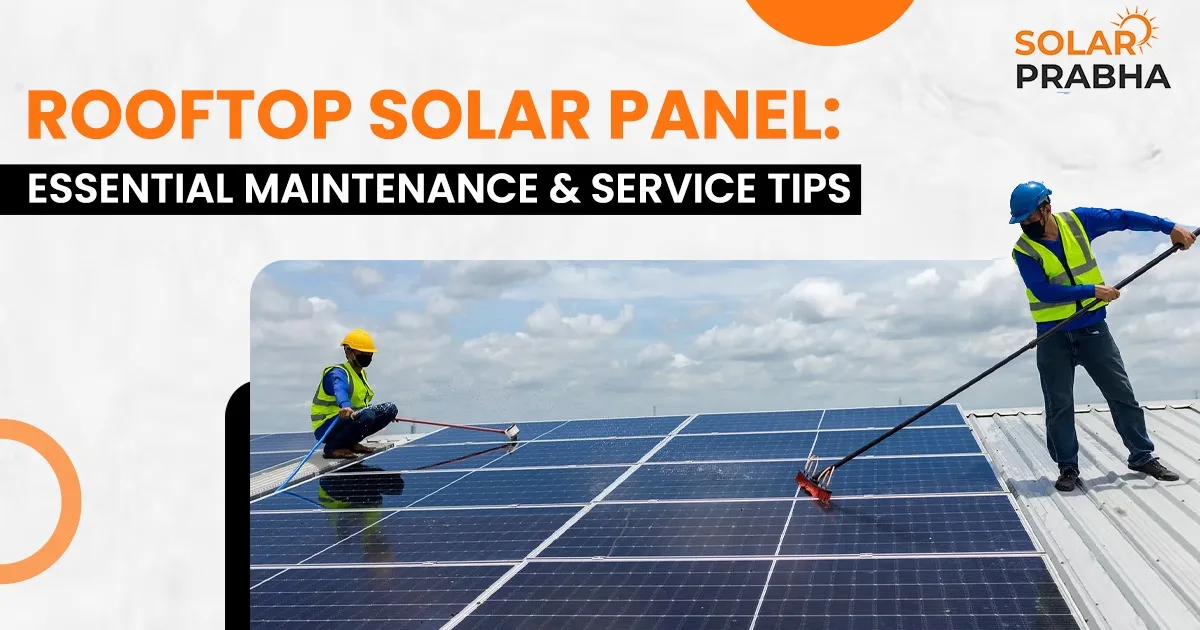Solar investment is accelerating into a global move. Also, more and more households and businesses are adopting this clean, renewable energy source. Notably, in India, the interest in solar power is driven by two major factors: the rising cost of electricity and government initiatives to promote sustainable energy.
Moreover, solar investment provides sustainable energy sources, and a promising solution to reduce our dependence on fossil fuels. Thus mitigating the impacts of climate change. However, many potential adopters question whether the solar panels are worth the investment.
Therefore, in this blog, we shall explore the cost and returns of investing in solar, and other economic considerations, so you can make informed decisions about harnessing solar energy.
Key Considerations To Note In Solar Investment
We have outlined the key points to note before you invest in solar. The points below will help you to make an informed decision:
Initial Costs:
In any new investment, the initial investment required is a major factor. However, for solar investment, the cost of solar panels now has significantly decreased, Also, the reasons are technological advancements and increased production. However, investors still have to think about the substantial upfront expenses of the solar installation’s size, the panels’ efficiency, and regional variations in installation costs.
Long-Term Savings:
Solar panels offer long-term savings on energy bills by generating electricity from sunlight, which translates into reduced reliance on traditional grid power. Consequently, this can lead to substantial savings on monthly utility bills. Moreover, the savings depend on the solar installation size, local energy prices, and the panels’ efficiency.
Many states have net metering, enabling solar panel owners to sell excess electricity back to the grid. Therefore, the investors can contribute to a cleaner energy grid and get an opportunity for additional income or credits on electricity bills.
Environmental Benefits:
Going further, solar panels offer undeniable environmental benefits. Moreover, renewable energy from the sun produces minimal greenhouse gas emissions compared to traditional energy sources. Consequently, it reduces the carbon footprint and promotes a more sustainable future.
Furthermore, manufacturers are adopting greener production methods and recycling programs. Hence enhancing the overall sustainability of solar power.
Maintenance Costs:
Solar panels have low maintenance requirements. Moreover, they need occasional cleaning and inspections which are sufficient to keep the system operating efficiently.
Therefore, the longevity of solar panels adds to their economic viability. Did you know most solar panels come with warranties ranging from 20 to 25 years? Also, many systems exceed these expectations and continue to generate power for several decades. Therefore, solar panels enhance the return on investment and make solar investment a reliable long-term energy solution.
Resale Value and Property Appreciation:
On the positive side, the installation of solar panels has a good impact on the resale value of a property. Also, new-age homebuyers are interested in energy-efficient homes and renewable energy sources. Therefore, you stand to gain if your home is equipped with solar panels. Your home can sell faster and command higher prices in the real estate market.
Factors Affecting Solar Energy Investment Costs
Several variables affect the cost and viability of implementing solar power systems. Therefore, for making a solar investment, investors have to informed decisions.
Know the factors that influence the cost of solar energy:
The efficiency of Solar Panels
You will need a lower number of solar panels if you choose higher efficiency panels which provide more power per unit area. Consequently, it lowers expenses for installation and maintenance.
Manufacturing and technological advancements
Today manufacturing techniques and technology are advanced. Consequently, lowering the cost of solar panels. Moreover, more demand has reduced manufacturing costs.
Solar Resource Potential
Solar investment is economically feasible in places with plenty of sunlight and a good climate because solar panels can produce more electricity.
Government Policies and Incentives
Government incentives and policies influence the costs of solar energy. Also, the favourable government policies help offset the installation costs and shorten the time it takes for a solar system to pay for itself. Also, The net metering laws enable solar system owners to sell any excess electricity back to the grid.
Research and Development
Further, Solar energy R&D can result in scientific advancements, enhanced efficiency, and lower costs. Therefore, future solar investment may come at nominal costs with higher returns on investment.
Market Competition
With more technological advancements and markets expanding, there is rising competition among solar panel suppliers, installers, and manufacturers. Therefore, this facilitates lower costs.
Calculating the Return on Investment (ROI) for Solar Systems
Several factors help to assess the financial advantages and expenses connected to solar energy investments to determine the Return on Investment (ROI) for solar systems.
- Initial Investment: You must calculate the overall cost of installing the solar system, including any required electrical infrastructure modifications, equipment, labour, and permits. Also, the size of the system and the installation’s particular needs will affect its price.
- Energy Production: Calculating how much power the solar system will produce throughout its existence is a must. Moreover, this will be based on the system’s capacity, location, direction, and annual average solar radiation.
- Electricity Savings: You can calculate and find a fair estimate of the power produced by the solar system. Consequently, take into account the present and anticipated electricity tariffs in the future. Also, calculate the yearly power consumption, and multiply the expected energy production by the appropriate electricity rates.
- Incentives and Tax Credits: Note down any incentives, rebates, grants, or tax credits offered by the state, municipal, and utility providers, Therefore, the initial cost and, hence, the ROI, can be greatly impacted by these incentives.
- Costs of Maintenance and Operation: Moreover, consider the continuing expenses related to upkeep and operation throughout the solar system’s anticipated lifespan. Also, expenses might include regular maintenance, upkeep, repairs, and insurance fees.
- Options for Financing: Consider the solar system’s financing options. Further, include interest payments and any additional costs if the installation is paid for using a loan.
- ROI Calculation: You can now calculate the ROI by the net present value of the cash flows from the solar system divided by the initial investment, and the result is expressed as a percentage. The equation reads: ROI = (Net Present Value / Initial Investment) x 100
Understanding the Value of Investing in Solar Energy
Investing in solar energy allows you to convert sunlight into electricity. Consequently, this shift enables you to generate your energy, reducing your electricity bills and reliance on traditional power grids. Also, sustainable solar power helps reduce carbon emissions, making it an eco-friendly option.
Moreover, in the ensuing years, the savings exceed the initial cost, making solar panels a smart long-term investment:
Pros of Investing in Solar Energy
- Solar panels generate your electricity, reducing reliance on the grid and shielding you from rising electricity costs.
- Solar energy is a clean, renewable power source alternative that helps you reduce your carbon footprint and contribute to sustainability.
- Solar panel installations make your home more attractive and valuable in the real estate market.
- Once installed, solar panels require very little maintenance and can last up to 25 years, providing a long-term solution with minimal upkeep.
Government Incentives and Financing Options For Solar Investments
The government of India Governments offers financing and incentive alternatives as instruments to encourage and support certain businesses or initiatives.
Therefore, the recent government policies on solar investment subsidies and loans aim to offer financial support, tax advantages, and other incentives to people, companies, and organisations.
Moreover, the solar energy industry has witnessed significant growth in recent years, driven by technological advancements, falling costs, and supportive government policies.
Some key strategies:
Government Incentives
Subsidies and Tax Credits
The government of India provides direct subsidies to reduce the upfront cost of solar installations. Moreover, this includes subsidies for solar panels, inverters, and installation.
You get Tax credits which reduce taxable income for individuals and businesses who invest in solar energy systems.
Feed-in Tariffs (FITs)
This guarantees a fixed price for the electricity generated by solar systems and sold to the grid. Therefore, it provides a stable revenue stream for solar power producers.
Net Metering
The Net metering system allows solar system owners to offset their electricity consumption. Consequently, by crediting excess energy generated and fed back into the grid against their usage they benefit.
Renewable Portfolio Standards (RPS)
RPS mandates that utilities generate a certain percentage of their electricity from renewable sources, including solar power. Therefore, this further creates a demand for solar energy.
Accelerated Depreciation
This allows businesses to write off the cost of solar installations more quickly, providing tax benefits.
Financing Options
Solar Loans:
Under this banks and credit unions offer traditional loans to finance solar installations.
Also, specialized lenders provide loans specifically for solar projects, often with attractive interest rates and terms.
Solar Leases and Power Purchase Agreements (PPAs):
Here a third-party company owns and operates the solar system, while the property owner leases the system and pays a fixed monthly fee.
A PPA is a long-term contract where a third-party company owns and operates the solar system, selling the electricity generated to the property owner at a fixed rate.
Home Equity Loans and Lines of Credit:
Through this all homeowners can use home equity loans or lines of credit to finance solar installations, leveraging the equity in their homes.
Additional Considerations
- Many local governments offer additional incentives, such as property tax exemptions or rebates, to encourage solar adoption.
- It’s essential to consult with solar energy experts to determine the best financing options and incentives available in your specific region.
- While the initial investment may be significant, solar energy can provide long-term savings on electricity bills and environmental benefits.
Conclusion
After reading this blog, you now have comprehensive details about the compelling economics of solar energy to make a powerful case for increased investment and adoption. Also, the declining costs, driven by technological advancements, economies of scale, and supportive policies, have made solar investment a competitive and attractive energy source.
Moreover, solar energy systems offer substantial long-term benefits, including significant cost savings, reduced reliance on fossil fuels, and environmental sustainability. Therefore, by harnessing the abundant solar potential, we can contribute to a cleaner and greener future.
Are you ready to embrace solar energy with solar investment? You can consider taking the first step towards a sustainable future. Contact SolarPrabha today to explore how solar energy can benefit you.
